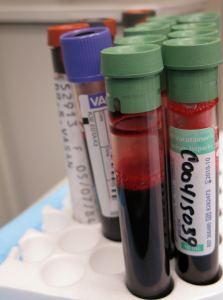Have you ever wanted to have night vision, or Clark Kent’s super-hearing? Although those particular powers may be firmly set in the realm of comic books, there are real people in the world with what many describe as a special ability; synesthesia.
Synesthesia is a phenomenon where one stimulus triggers two or more of the areas of the brain that deal with processing sensations. Basically, synesthetes (people who have synesthesia), have the sensation of tasting colors, seeing music or experiencing other, even more amazing examples of the blending of perception. A synesthete may taste raspberries just from seeing the color blue, or vice versa!
There are many different types of synesthesia, however the most prevalent is grapheme-color synesthesia, which means that someone associates color to a particular letter. Patricia Lynn, a writer and a famous synesthete, explains how she sees text:
“For as long as I could remember, each letter of the alphabet had a different color. Each word had a different color too… and so did each number. The colors of letters, words and numbers were as intrinsic a part of them as their shapes, and like the shapes, the colors never changed.”
How synesthetes with grapheme – color synesthesia might see these letters.
Besides being a cool get-to-know-you fact, synesthesia can have practical benefits. Patricia explains how synesthesia helped her learn her letters as a child: “[To] make an ‘R’, all I had to do was first write a ‘P’ and then draw a line down from its loop. … I was so surprised that I could turn a yellow letter into an orange one just by adding a line,”. Other perks include having a better memory for certain tasks, or identifying musical notes more easily thanks to this biological quirk.
Like many other synesthetes, Patricia went a large part of her life without knowing that the way she saw the world was unique. This fact has somewhat impeded our ability to study what is going in the brains of people with synesthesia; potential subjects don’t know that they are different from others. Worse still is that just a few decades ago, those who actually realized they could feel what others didn’t would be labeled as having an overly-active imagination. Knowledge about this phenomenon was just too niche and most did not believe that this is how synesthetes legitimately saw the world.
Thankfully, that’s changed in the past few decades. We now have a better understanding of what is happening when, say, a dog barking sets of a display of fireworks in the mind of the synesthete. In the average brain, all the major regions are quite predictably interconnected; our functional networks are hooked up to give us the every-day perception of reality (how dull!). One theory states that unlike us, people who have synesthesia have significantly greater connectivity between two or several of their perceptual centers . Say, a person who experiences music as sensations in their body would have a greater amount of connectivity between the auditory and somatosensory (the part that processes touch) centers of the brain. How this occurs is still mostly a mystery.

Steffie Tomson (Synesthesia Researcher) [Creative Commons attribution licence]
Although almost all synesthetes are born with their ability, there have been incidents of people getting synesthesia as a result of brain trauma. Although I would love to see songs give me a personal visual display when I go dancing, I don’t think I’d ever resort to such extreme measures.
Written and published by Alena Safina







